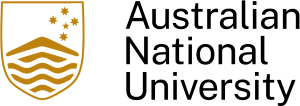Obstetrics and Gynaecology, Kasangati Health Centre IV, Uganda

My elective was in Kasangati, a small town around 40 minutes outside of the capital Kampala.
The hospital, Kasangati Health Centre IV, is one step below a referring/tertiary hospital with a small general medical ward, one operating theatre, a delivery room and post natal ward, and many outpatient clinics (general and HIV).
I discovered the hospital through Electives Net, and the elective is organised through a small non-for-profit organisation (Centre for Youth Driven Development Initiatives) based in a village near Kasangati, who provided transport to and from the airport, accommodation and all meals.
On the first day of my placement I had a general introduction to the hospital from my supervisor Dr Ivan, and then went back to my accommodation where one of the youth workers from CFYDDI gave me a tutorial on the national language Luganda and some common phrases and vocabulary that would be useful at the hospital.
One of the hardest things to get my head around was getting to and from the hospital from my accommodation. The hospital was about a 30 minute drive and public transport was provided by a series of informal ‘taxis’ which are minibuses. I would flag down a “boda boda” (motorcycle – the organisation provided me with a helmet) to the closest town, and from there I would get a taxi to the hospital.
On a typical day at the hospital I would start at 9am at the antenatal clinic. There were usually around 100 women waiting there in the morning to be seen, and one consulting room with two beds.
The midwives showed me how to palpate and measure fundal height (done with fingers as there were no tape measures), and listen for the foetal heart beat.
Most women were then given Malaria prophylaxis and folate/iron for those in the first trimester.
I would usually move between the antenatal clinic and the delivery room, which was three delivery beds in a very small and poorly ventilated room (very difficult conditions to ensure any semblance of patient confidentiality or privacy).
I witnessed and assisted with many deliveries, but will never forget my first – a first time mum who I stayed with for most of her labour and delivery, who gave me the biggest smile when the baby was finally born.
Otherwise, most of my time was in the operating theatre where I assisted with any Caesarean sections for the day.
Most of the caesareans were for obstructed labour – I saw a few women with Bandl’s ring, which I realised later is a relatively late sign of obstructed labour not often seen outside of developing countries.
In the hospital there was only one assistant and no scrub nurse, so as the assistant it was my responsibility to set up the instruments and the sterile field as well as assisting with the surgery.
I had an incredible elective in Uganda. By the end of my elective I felt quite burnt out, as I went alone and found it difficult to navigate and deal with the level of poverty in the towns, and as a non-Luganda speaker I sometimes felt a little isolated at the hospital.
However, for me the benefits of an elective in Uganda far outweighed the cons, and CYFDDI felt like my home away from home there – they were extremely kind and did everything they could to make sure I had a great time on my elective.
I would definitely recommend Kasangati for any future students.
